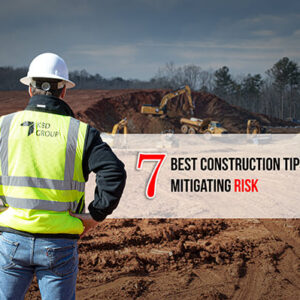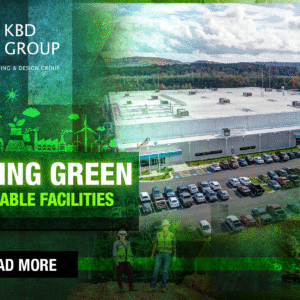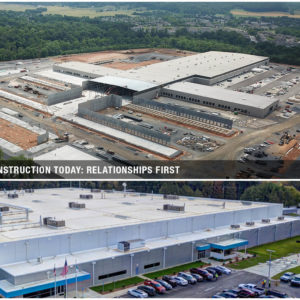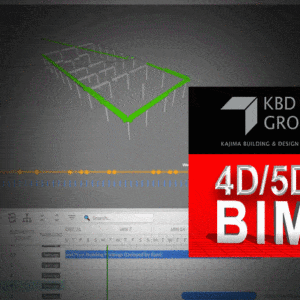CONSTRUCTION NEWS
LEED with Sustainable Construction:
5 Must-Knows When Considering LEED Certification
Understanding sustainable construction practices is critical in helping to reduce the environmental impact on jobsites and businesses. According to Bimhow, construction contributes to 23% of air pollution, 50% of climatic change, 40% of drinking water, and 50% of landfill waste. In response to these challenges there must be strong collaboration with all stakeholders to identify areas of concern and adopt sustainability practices. With this experience, we would like to share 5 LEED tips to help you meet your sustainability goals, whether you plan to receive a certification or not.
- White Roof
- Low/No Impact Refrigerant
- No/Low VOC Emitting Products
- Energy Efficient Products
- Use Native Species
- Low Flow Water Fxtures
What is the LEED rating system?
LEED stands for Leadership in Energy and Environmental Design and is a rating system created by the U.S. Green Building Council. Having a LEED certification states that the building was designed and built with sustainability in mind. This type of facility offers efficient, low-carbon, environmentally friendly and cost-saving green solutions. The standard is utilized in more than 160 nations worldwide and is widely acknowledged as the industry standard for green building in the United States. Having a LEED certification is proof that the facility helps the environment by saving energy and water while reducing pollution.
To achieve a LEED certification, a building must go through a rigorous review process conducted by Green Business Certification Inc. that includes a pre-certification review, a construction review, and a post-construction review. The building must also meet certain minimum requirements prerequisites in each category and earn a certain number of points to be eligible for certification.
The 5 Must-Knows When Considering LEED Certification
When considering LEED (Leadership in Energy and Environmental Design) certification for your project, it’s essential to understand several key factors that can significantly impact your success. Here are five must-knows:
1. Know the LEED Pointing Systems
A thorough understanding of the LEED pointing system is essential. The LEED rating system is based on a point system, with buildings earning points for meeting specific criteria in categories such as energy efficiency, water conservation, and indoor environmental quality. The more points a building earns, the higher its LEED rating will be.
There are four levels of LEED certification:
- Certified (40-49 points)
- Silver (50-59 points)
- Gold (60-79 points)
- Platinum (80+ points)
Clients need to be aware of the points required for each level and how their budget will influence their ability to achieve these points. For example, the location can save costs and impact on the overall budget. Reviewing the budget and determining the feasibility of LEED certification based on the desired level is crucial.
2. Location Impacts LEED
The location of your project plays a crucial role in earning LEED points. Not all sites are created equal when it comes to selecting certain sustainable options. For example, solar panels may not work in some regions due to legal restrictions. Although there can be workarounds, in many cases this will increase costs. That’s why site selection is crucial to maximize LEED and sustainable options.
Selecting a site in a LEED-certified neighborhood or one that meets regional priority credits can boost your score while saving costs. For example, choosing a brownfield site or a location with diverse usage (e.g., near highways, airports, gyms, religious organizations, bike paths, walkable communities) can earn additional points. The goal is to select a location that will create a win-win for the surrounding community.
It’s important to communicate and plan before the site is selected to maximize these opportunities. However, you can work with your general contractor to explore LEED sustainable options for your current site or facility.
3. Have Sustainability Goals
LEED certification is most effective when clients have clear sustainability goals. These goals might include energy efficiency, environmental responsibility, and the use of renewable energy sources. For instance, companies aiming for energy efficiency should consider solar energy from the beginning which can include rooftop systems, ground systems, or solar-covered parking. Additionally, incorporating features like white roofs, rainwater collection systems, and low-impact design landscaping can further support sustainability targets. These choices not only contribute to LEED points but also offer benefits like tax credits, improved HVAC efficiency, and more.
4. Engaging a General Contractor that Specializes in Design-Build
Engaging a general contractor from the start experienced in design-build construction is crucial for seamless LEED certification. Selecting a design firm separated from construction can lead to missed opportunities and budget consequences which negatively impact time, cost, and effort. Selecting a Design-Build firm familiar with the LEED Integrated Design Process can ensure that LEED best practices are all considered from the start. This approach helps in achieving LEED points efficiently and cost-effectively.
Skilled LEED Design-Build firm will consider the following:
- Building life cycle impact assessment
- Sustainable Material Selection
- Environmental Product Declarations (EPD)
- Health Product Declarations (HPD)
- Low/No Emitting materials
- Volatile organic Compounds (VOC)
- Energy Efficiency
- Water Saving Techniques
- Waste Management Plan for Construction
5. Have a Budget Plan
Having a comprehensive budget plan is strongly suggested when pursuing LEED certification. The budget should include all aspects of the project like site selection, design, construction, and sustainability features. It’s important to consider potential cost savings from tax credits, energy efficiency, and other sustainable practices You should consider both the upfront and the return on investment (ROI), such as design fees, materials, labor, commissioning, certification fees, energy, water, maintenance, operations, and incentives. There are tools available to use like the LEED cost calculator and the LEED cost database, to assist you and compare options. A well-planned budget ensures that the project stays on time and budget while meeting LEED requirements.
Not seeking LEED but Desire Sustainable Options?
While clients may not always pursue LEED or Green Globes certifications, KBD Group has a proven track record of providing sustainable construction services. There are many green cost saving solutions KBD Group incorporate into all construction projects allowing clients to reap some of the benefits to help reduce the environmental impact. Some of those features include white roofs, eco-friendly HVAC systems, native plant landscaping to save on irrigation systems, utilizing NO/LOW VOC emitting products, low-flow water fixtures, and much more. KBD Group has a Base Green Spec set and sustainable building standards set to support the needs of each project.
KBD Group Understands LEED


LEED Design-Build Support
At KBD Group, our in-house Design-Build team of LEED and Green Globes professionals along with our specialty subcontractors can provide cost-saving and sustainable strategies from preconstruction to completion. Our experience is highlighted by our pursuit of Kajima’s ambitious triple zero goal by 2050, which includes constructing Green Globe and LEED-certified buildings while incorporating advanced green technology. Partnering with KBD Group grants access to our expert Design-Build team. This guarantees cost-efficiency and sustainability from start to completion and a commitment that has lasting a positive impact on the environment and society.
Ready to Help
Your Vision, Our Expertise!
© 2024 Kajima Building & Design Group. ALL RIGHTS RESERVED
Website designed by KBD Group Marketing Department




